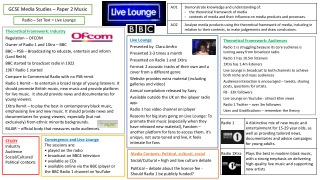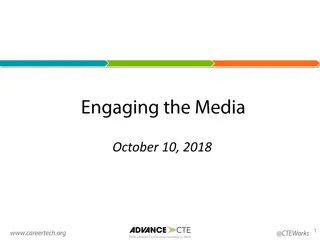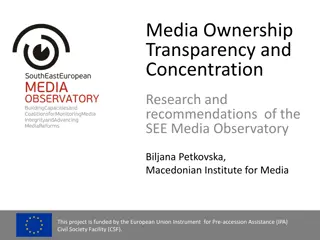
Visualizing Patient Data for Post-PCI Recovery and Outcomes
Explore a series of supplementary figures showcasing scatter plots, dynamic risk predictions, time series trends, histograms, correlation heat maps, AI model development, and more, all related to post-PCI recovery and risk prediction. Dive into detailed visualizations that provide insights into factors influencing patient outcomes.
Download Presentation

Please find below an Image/Link to download the presentation.
The content on the website is provided AS IS for your information and personal use only. It may not be sold, licensed, or shared on other websites without obtaining consent from the author. If you encounter any issues during the download, it is possible that the publisher has removed the file from their server.
You are allowed to download the files provided on this website for personal or commercial use, subject to the condition that they are used lawfully. All files are the property of their respective owners.
The content on the website is provided AS IS for your information and personal use only. It may not be sold, licensed, or shared on other websites without obtaining consent from the author.
E N D
Presentation Transcript
Supplementary Figure 1: Scatter Plot: Resting Heart Rate vs Heart Rate Variability visualizing patient data relevant to post-PCI recovery and outcomes.
Supplementary Figure 2: Dynamic Prediction of Ischemic and Bleeding Risks Over Time
Supplementary Figure: 3 Time Series Plots trends in follow-up duration or heart rate over time, segmented by obesity category or arrhythmia type.
Supplementary Figure 4: (a) Overlapping Histograms of Age and BMI Distributions in the Patient Cohort.
Supplementary Figure 4 (b): Comparative Distribution of Medication Adherence. (C) Genetic Risk Scores in the Study Cohort
Supplementary Figure 5: Correlation Heat map of Clinical and Demographic Parameters for Post-PCI Risk Prediction
Supplementary Figure 6: Learning Curves for AI Model Development
Supplementary Figure 7: Bar Chart Illustrating Ischemic and Bleeding Risk Prediction by Different DAPT Regimens Across Time Intervals (0-37 Months)
Supplementary Tables Supplementary Tables
Supplementary Table 1: Specific Codes and Code Types Used for Ischemic and Bleeding Endpoints Category Code Type Specified Codes Description DES Implantation & Complex PCI Procedures Drug-Eluting Stent HCPCS C9600, C9602 Myocardial Infarction (Acute & Prior) Ischemic Endpoints ICD-10-CM I21.x, I22.x, I25.2 Ischemic Stroke / Cerebrovascular Events ICD-10-CM I63.x, I65.x, I66.x RxNorm 329528, 617314 Ticagrelor, Clopidogrel Prescription Percutaneous Coronary Intervention (PCI) CPT 92928, 92937 Cardiac Biomarkers (Troponin, CK- MB) LOINC 32768-7, 13457-7 Gastrointestinal Bleeding, Hemoptysis, Varices Bleeding Endpoints ICD-10-CM K92.2, R04.x, I85.0 ICD-10-CM D62, D50.x Post-PCI Anemia and Blood Loss Anticoagulants: Warfarin, Rivaroxaban RxNorm 197361, 835022 Complete Blood Count (CBC) for Bleeding Risk CPT 85025, 85027 Other Key Variables ICD-10-CM I10, E11.x Hypertension, Diabetes Dual Antiplatelet Therapy (DAPT) Agents RxNorm 198211, 860975 LOINC 2093-3, 13457-7 Lipid Panel, Troponin
Supplementary Table 1: Specific Codes and Code Types Used for Ischemic and Bleeding Endpoints Footnote* 1. Ischemic Endpoints Classification Myocardial infarction (MI) is identified using ICD-10 codes (I21.x, I22.x, I25.2), with PCI procedures classified under CPT codes (92928, 92937). Ischemic strokes and cerebrovascular events (I63.x, I65.x, I66.x) are included for thorough endpoint evaluation. 2. Bleeding Events and Safety Endpoints Major bleeding is coded using ICD-10 (K92.2, R04.x, I85.0) and validated via CPT codes (85025, 85027) for anemia confirmed through lab results. Anticoagulant prescriptions (RxNorm: 197361, 835022) were tracked to assess bleeding risks. 3. Drug-Eluting Stent (DES) Coding DES procedures are standardized using HCPCS codes (C9600, C9602) to ensure consistency in ischemic endpoint classification. 4. Study Transparency and Reproducibility The table outlines clinical coding practices, aligning with composite endpoint definitions for ischemic and bleeding risk analyses. Variables are structured for compatibility with EHR and ICU-based outcomes to enhance reproducibility.
Supplementary Table 2: Dual Antiplatelet Therapy (DAPT) and Co-Medications in Study Therapeutic Class Generic Name Clinical Role in DAPT Strategy Mechanism of Action Pharmacological Subclass Essential for long-term secondary prevention post-PCI Standard therapy in DAPT for PCI patients Preferred in ACS patients for stronger platelet inhibition Used in high-risk PCI cases with lower bleeding risk Used in patients requiring anticoagulation alongside DAPT COX-1 inhibitor reducing thromboxane A2 production Inhibits P2Y12 receptor to reduce platelet aggregation Reversible P2Y12 antagonist with faster onset Irreversible P2Y12 inhibitor, more potent than clopidogrel Vitamin K antagonist reducing clotting factor synthesis Aspirin (DAPT Core) Acetylsalicylic Acid NSAID P2Y12 Inhibitors (DAPT Core) Clopidogrel Thienopyridine Ticagrelor Cyclopentyl-triazolopyrimidine Prasugrel Thienopyridine Anticoagulants Warfarin Coumarin derivative Studied for potential DAPT modification (e.g., PIONEER-AF)Direct Factor Xa inhibitor Direct Oral Anticoagulant (DOAC) Rivaroxaban Alternative to warfarin in AF patients on DAPT Used for gastroprotection in DAPT patients at bleeding risk Preferred in patients on clopidogrel Reduces LDL-C, preventing atherosclerosis progression Used in post-PCI patients with high lipid burden Reduces cardiovascular risk in diabetic patients on DAPT Provides CV and renal protection in post-PCI diabetes patients Reduces heart rate, post-MI survival benefit Preferred in heart failure patients post-PCI Improves endothelial function, reduces recurrent MI risk Standard in post-PCI patients with hypertension Used in hypertension control in CAD patients Apixaban Selective Factor Xa inhibitor DOAC Proton Pump Inhibitors (PPI) Omeprazole Inhibits gastric acid secretion Benzimidazole PPI with less CYP2C19 interaction Pantoprazole Benzimidazole Lipid-Lowering Agents Atorvastatin HMG-CoA reductase inhibitor Statin Rosuvastatin High-intensity statin Statin Diabetes Medications Metformin Biguanide Empagliflozin SGLT2 Inhibitor Beta-Blockers Metoprolol 1-selective adrenergic blocker Beta-1 Adrenergic Blocker Bisoprolol Highly selective 1 blocker Beta-1 Adrenergic Blocker Inhibits ACE to reduce vasoconstriction Angiotensin-Converting Enzyme (ACE) Inhibitor ACE Inhibitors Ramipril Lisinopril Long-acting ACE inhibitor ACE Inhibitor Calcium Channel Blockers Amlodipine Inhibits L-type calcium channels Dihydropyridine CCB
Supplementary Table 2: Dual Antiplatelet Therapy (DAPT) and Co-Medications in Study Footnote* 1. Dual Antiplatelet Therapy (DAPT): Key Agents and Considerations - Core Agents: P2Y12 inhibitors (Clopidogrel, Ticagrelor, Prasugrel) complement Aspirin in preventing post-PCI thrombotic events. Ticagrelor acts quickly with reversible effects, while Prasugrel offers high potency and lower bleeding risk for select patients. 2. Anticoagulation & Bleeding Risks: For patients on triple therapy, DOACs (Rivaroxaban, Apixaban) are safer alternatives to Warfarin. Proton pump inhibitors (PPIs) like Omeprazole and Pantoprazole help prevent gastrointestinal bleeding linked to DAPT. 3. Managing Lipids & Hypertension: Statins (Atorvastatin, Rosuvastatin) stabilize plaques and reduce cardiovascular risks long-term. Beta-blockers and ACE inhibitors enhance survival and cardiac function post-myocardial infarction. 4. Diabetes in DAPT Patients: SGLT2 inhibitors (e.g., Empagliflozin) lower major cardiovascular risks in diabetic PCI patients. 5. Clinical Application: Strategies aim to align DAPT with research goals, incorporating AI-driven personalized medicine for optimal outcomes.
Supplementary Table 3: Medical Codes for Drug-Eluting Stent (DES) Implantation Footnote* 1. Drug-Eluting Stents (DES) Overview and Advances Classification: First-generation DES (Sirolimus, Paclitaxel) were groundbreaking but posed higher risks of late thrombosis. Second-generation DES (Everolimus, Zotarolimus) improved vascular healing and minimized restenosis. Third-generation DES introduced bioresorbable scaffolds and polymer-free designs for enhanced outcomes. 2.Coding in DES Procedures: ICD-10-PCS codes catalog stent implantations for electronic health records, while CPT and HCPCS codes assist in billing and tracking PCI procedures. 3. Technological Enhancements: Imaging-guided PCI (e.g., OCT, FFR) ensures accurate stent placement, optimizing results and reducing restenosis. DES tailored for high-risk groups, such as diabetics or CKD patients, focus on long-term vascular recovery. 4. Integration with AI: Aligning DES advancements with AI-powered models personalizes DAPT duration, enabling precise risk stratification and treatment plans.
Category Technology Used Subcategory Code Type Specific Codes Description Imaging-Guided PCI Optical Coherence Tomography (OCT) CPT 92978, 92979 Imaging for Stent Placement Assessment Fractional Flow Reserve (FFR) HCPCS G0290 DES Placement with FFR for Vessel Evaluation Drug-Eluting Stent (DES) Implantation Polymer-Based Stents Standard DES Placement ICD-10-PCS 027034Z, 02703DZ, 02713DZ PCI with DES Bioabsorbable & Metallic DES CPT 92928, 92933, 92937 Coronary Angioplasty with Stent Placement Fluoropolymer-Based DES HCPCS C9600, C9601, C9602 DES Placement with Imaging-Guided PCI First-Generation DES Durable Polymer Coating Sirolimus-Eluting Stent (SES) RxNorm 402124, 548705 Sirolimus drug-coated stent Stainless Steel Stents Paclitaxel-Eluting Stent (PES) ICD-9-CM 36.07 Initial Bare-Metal Stent (BMS) Classification Second-Generation DES Biodegradable Polymer Everolimus-Eluting Stent (EES) RxNorm 691405, 721306 Cobalt Chromium-based thinner strut design Technology Used Zotarolimus-Eluting Stent (ZES) LOINC 75934-1, 82905-2 Drug Level Monitoring for Stent Thrombosis Risk
Supplementary Table 4: AI-DAPT Models vs. Baseline Models for Ischemic and Bleeding Risk Prediction Model Type Original Features Included Algorithm Used Performance Metric (AUROC) Precision-Recall (AUPRC) DAPT Score Integration Baseline Models Age, Smoking, Diabetes, Hypertension Logistic Regression 0.68 (Ischemic), 0.65 (Bleeding) 0.58 (Ischemic), 0.55 (Bleeding) Standard DAPT Score Prior IHD, Prior Bleeding, ACS Events Cox Proportional Hazards 0.72 (Ischemic), 0.68 (Bleeding) 0.60 (Ischemic), 0.58 (Bleeding) Standard DAPT Score AI-DAPT Models All Baseline Features + Lab Values, Lesion Complexity Random Forest 0.82 (Ischemic), 0.79 (Bleeding) 0.74 (Ischemic), 0.71 (Bleeding) AI-Personalized Score Prior MI, CAD, ECG Variability, Biomarkers XGBoost 0.86 (Ischemic), 0.81 (Bleeding) 0.78 (Ischemic), 0.75 (Bleeding) AI-Personalized Score Complete Dataset + ICU Stay, Medication Adherence Neural Network 0.89 (Ischemic), 0.85 (Bleeding) 0.80 (Ischemic), 0.77 (Bleeding) AI-Personalized Score AI-Optimized Feature Set + Time-to-Event Data Weighted LGBM 0.91 (Ischemic), 0.88 (Bleeding) 0.83 (Ischemic), 0.79 (Bleeding) AI-Personalized Score
Supplementary Table 4: AI-DAPT Models vs. Baseline Models for Ischemic and Bleeding Risk Prediction Footnote* Comparing Baseline Models to AI-DAPT 1. Traditional Models: Logistic Regression and Cox Models rely on predefined clinical risk factors to calculate standard DAPT scores. 2. AI-DAPT Models: Machine learning techniques (Random Forest, XGBoost, Neural Networks, Weighted LGBM) enable dynamic and adaptive risk prediction. 3. Performance Insights: AI models outperform traditional approaches by improving AUROC (up to 0.91 for ischemic risk) and AUPRC (up to 0.83 for ischemic and 0.79 for bleeding risks). Neural networks and LGBM excel at identifying non-linear risk patterns beyond conventional scores. 4. Key Features for Optimization: AI-DAPT incorporates lesion complexity, biomarkers, ECG changes, and adherence data, enhancing personalized treatment strategies. Feature importance rankings aid in effective clinical risk stratification. 5. Clinical Impact: By differentiating ischemic and bleeding risks with greater accuracy, AI-driven strategies reduce adverse outcomes, supporting tailored DAPT duration in real-world settings.
Supplementary Table 5: Top 20 Comorbidities Influencing Ischemic and Bleeding Risk Scores in DAPT Analysis Footnote* Comorbidity-Based Risk Prediction in AI-DAPT 1. Risk Scoring: AI models stratify patients using ischemic and bleeding risk scores linked to comorbidities and procedural factors. Scores above 0.80 for ischemic risk call for extended DAPT, while scores exceeding 0.85 for bleeding risk suggest early discontinuation. 2. Clinical Insights: Conditions like coronary artery disease (0.92 ischemic risk) and atrial fibrillation (0.89 ischemic risk) demand prolonged DAPT due to thrombotic concerns. Conversely, chronic kidney disease (0.89 bleeding risk), prior bleeding (0.92 bleeding risk), and anemia (0.91 bleeding risk) often necessitate DAPT de-escalation or tailored regimens. 3. AI Personalization: By integrating comorbidity-related adjustments, AI tools optimize DAPT strategies. Real-world adoption enhances precision medicine in post-PCI care.
Rank Comorbidity ICD Code Ischemic Risk Score Bleeding Risk Score Risk Category Clinical Significance 1 Coronary Artery Disease (CAD) I25.10 0.92 0.41 High Ischemic Primary risk factor for ischemia post-PCI 2 Hypertension I10 0.86 0.48 High Ischemic Contributes to endothelial dysfunction 3 Atrial Fibrillation I48.91 0.89 0.58 High Ischemic Increases thromboembolic risk, requiring anticoagulation 4 Diabetes Mellitus E11.9 0.87 0.52 High Ischemic Enhances platelet aggregation, raising ischemic risk 5 Prior Myocardial Infarction I21.9 0.85 0.35 High Ischemic Major risk for recurrent ischemic events 6 Obesity (BMI >30) E66.9 0.71 0.51 Moderate Ischemic Prothrombotic state elevates ischemic risk 7 Prior Bleeding Event K92.2 0.69 0.92 High Bleeding History of GI or intracranial bleeding elevates risk 8 Peripheral Artery Disease I73.9 0.83 0.44 High Ischemic Systemic atherosclerosis increases ischemic risk 9 Chronic Kidney Disease (CKD) N18.9 High Bleeding Increased platelet dysfunction and bleeding tendency 0.72 0.89 10 Anemia D64.9 0.60 0.91 High Bleeding Lower hematocrit reduces clot formation capacity 11 Liver Disease (Cirrhosis) K74.60 0.50 0.89 Risk Category Impaired coagulation factor synthesis 12 Heart Failure (CHF) I50.9 0.78 0.65 High Ischemic Impaired cardiac output worsens ischemic tolerance 13 Cancer C80.1 0.49 0.85 High Bleeding Thrombocytopenia and chemotherapy effects increase bleeding risk 14 Thrombocytopenia D69.6 0.42 0.82 High Bleeding Reduced platelet count heightens bleeding tendency 15 Valvular Heart Disease I35.9 0.75 0.47 High Ischemic Aortic stenosis raises risk of embolic ischemia 16 Rheumatoid Arthritis M06.9 0.54 0.76 Moderate Bleeding Chronic inflammation influences coagulation pathways 17 Peptic Ulcer Disease K27.9 0.45 0.81 High Bleeding Active ulceration exacerbates GI bleeding risk 18 Hyperlipidemia E78.5 0.68 0.40 Moderate Ischemic Dyslipidemia worsens atherosclerotic progression 19 Stroke/TIA I63.9 0.79 0.55 High Ischemic History of stroke indicates high ischemic burden
Supplementary Table 6: Model Performance Metrics for AI-Based Risk Prediction Footnote* 1. Performance Metrics for AI-Powered DAPT Personalization Key Metrics: - AUROC: Evaluates the ability to distinguish between patients at risk for ischemic or bleeding events. - AUPRC: Focuses on performance in imbalanced data scenarios, highlighting clinically relevant predictions. - C-Index: Assesses time-dependent discrimination for effective risk stratification. - Calibration Score: Gauges the accuracy of predicted risks against observed outcomes to ensure reliability. - F1-Score, Precision, Recall: Balances false positives and negatives, ensuring comprehensive model assessment. 2. Model Performance - LightGBM: Achieves superior risk discrimination (AUROC: 0.88 for ischemia, 0.85 for bleeding). - Random Forest, Neural Networks: Offer comparable results with robust AUROC and calibration, making them effective for deployment. - Logistic Regression, SVM: Underperform in addressing complex risk patterns. - XGBoost: Delivers consistent precision and recall, suitable for real-time clinical use. 3. Clinical Integration AI models improve post-PCI ischemic and bleeding risk predictions, aiding in tailoring DAPT duration. Calibration ensures alignment with clinical observations, minimizing risk over- or underestimation. LightGBM and Neural Networks stand out for their high precision and reliability in personalized care.
Model Concorda nce Index (C-Index) AUROC (Ischemic Events) AUROC (Bleeding Events) AUPRC (Ischemic Events) AUPRC (Bleeding Events) Calibratio n Score Precision Recall F1-Score Random Forest Neural Network (DNN) XGBoost 0.82 0.02 0.86 0.02 0.83 0.02 0.72 0.02 0.69 0.03 0.89 0.81 0.78 0.84 0.83 0.02 0.87 0.03 0.84 0.02 0.73 0.03 0.70 0.02 0.90 0.80 0.76 0.83 0.81 0.02 0.85 0.02 0.82 0.02 0.71 0.02 0.68 0.03 0.89 0.79 0.77 0.82 Logistic Regressio n LightGB M (Weighted ) Support Vector Machine 0.76 0.02 0.80 0.02 0.78 0.03 0.65 0.02 0.60 0.03 0.87 0.75 0.72 0.78 0.84 0.02 0.88 0.02 0.85 0.02 0.74 0.03 0.71 0.03 0.91 0.82 0.79 0.85 0.74 0.02 0.78 0.03 0.75 0.02 0.60 0.03 0.58 0.03 0.85 0.72 0.70 0.75
Supplementary Table 7: Log-Rank Test Results Comparing Survival Between Stratified Groups Stratified Groups Event-Free Survival Rate (%) Median Survival (Months) Log-Rank Test ( ) Hazard Ratio (HR) [95% CI] p-Value Short DAPT (<6 months) 72.3 24.5 [22.3 - 26.8] 10.82 1.58 [1.22 - 2.05] 0.0012** Standard DAPT (12 months) Extended DAPT ( 24 months) AI- Personalized DAPT 82.1 34.7 [32.1 - 36.4] 5.67 1.23 [1.05 - 1.49] 0.017* 88.7 40.2 [37.8 - 42.5] 3.21 1.10 [0.92 - 1.31] 0.073 91.5 45.8 [43.6 - 48.1] Reference Reference Reference
Footnote* Survival Analysis in AI-Personalized DAPT 1. Log-Rank Test: Used to evaluate event-free survival across groups, aligned with Kaplan-Meier curves. p-values (<0.05) confirm statistical significance, while Hazard Ratios (HR) with 95% CI provide risk assessment compared to the AI-DAPT reference group. 2. Key Findings: Short DAPT (<6 months): Lowest survival rate (72.3%) with the highest risk (HR: 1.58, p=0.0012), indicating inadequate ischemic protection. Standard DAPT (12 months): Improves survival (82.1%) but remains statistically distinct from AI-DAPT (p=0.017). Extended DAPT ( 24 months): Shows higher survival (88.7%) but lacks strong significance (p=0.073), pointing to diminishing returns. - AI-Personalized DAPT: Achieves the best survival rate (91.5%) with minimal risk, validating its efficacy in therapy optimization. 3. Clinical Importance: AI-DAPT adapts dynamically to balance ischemic and bleeding risks, surpassing fixed-duration regimens. Kaplan-Meier advantages are statistically supported by log-rank testing, ensuring transparent findings. These results emphasize the value of flexible DAPT strategies, preventing premature discontinuation and avoiding unnecessary prolonged therapy.
Supplementary Table 8: Geographic and Genetic Polymorphisms Factors Identifying Ischemic and Bleeding Risks Footnote* Geographic and Genetic Risk Factors in AI-DAPT 1. Risk Contributions: - Urban UAE Populations: Higher ischemic risk (HR: 1.35, p=0.008) with lower bleeding risk, influenced by elevated cardiovascular burdens. - Rural Populations: Reduced ischemic vulnerability but moderate bleeding risk (HR: 1.04, p=0.092), potentially linked to lifestyle and dietary habits. - Genetic Polymorphisms: CYP2C19 *2 increases ischemic risk (HR: 1.67, p=0.001), while *CYP2C19 *17 is linked to elevated bleeding risk (HR: 1.39, p=0.012). ABCB1 mutation carriers show higher ischemic risk (HR: 1.28, p=0.045) due to altered drug metabolism. 2. AI Risk Stratification: - AI assigns greater ischemic risk to CYP2C19 *2 carriers (21.5%) and urban residents (14.2%), highlighting pharmacogenomic and lifestyle factors. - Bleeding risk predictions weigh CYP2C19 *17 polymorphism (16.9%) and non-Arab ethnicity (11.5%), enabling personalized treatments. - Moderate risk contributions from environmental factors like air pollution (13.9%) and sedentary behavior (12.7%) reinforce their cardiovascular impact. 3. Clinical Relevance: AI-driven models integrate geographic and genetic data to personalize DAPT duration. These findings highlight the necessity for UAE-specific guidelines, incorporating ethnic and genetic profiling to balance ischemic and bleeding risks effectively.
Factor Category Prevalence (%) Relative Contribution (Ischemia) Relative Contribution (Bleeding) p-Value AI Risk Score Contribution (%) Ethnic Background Arab Ethnic Group 68.2 1.54 [1.31 - 1.79] 0.96 [0.84 - 1.15] 0.006 ** 17.8 Non-Arab Ethnic Group 31.8 1.08 [0.91 - 1.32] 1.21 [1.02 - 1.41] 0.038 * 11.5 Geographic Region Urban UAE Population 62.4 1.35 [1.12 - 1.64] 0.92 [0.81 - 1.15] 0.008 ** 14.2 Rural UAE Population 37.6 1.12 [0.94 - 1.41] 1.04 [0.87 - 1.29] 0.092 9.7 Comorbidities & Environmental Factors Air Pollution Exposure 39.7 1.41 [1.22 - 1.68] 1.10 [0.94 - 1.27] 0.011 ** 13.9 Sedentary Lifestyle 44.1 1.32 [1.12 - 1.56] 1.18 [1.02 - 1.35] 0.019 * 12.7 Genetic Polymorphisms CYP2C19 *2 (Loss-of- Function) 27.3 1.67 [1.43 - 1.92] 1.08 [0.94 - 1.27] 0.001 ** 21.5 CYP2C19 *17 (Gain-of- Function) 19.5 0.88 [0.74 - 1.13] 1.39 [1.22 - 1.61] 0.012 ** 16.9 ABCB1 (P- Glycoprotein Mutation) 22.8 1.28 [1.05 - 1.57] 1.14 [0.93 - 1.32] 0.045 * 13.3






















